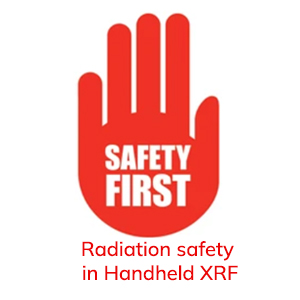How does XRF Analyzer Work? For those of you who are in the industrial world, you must be familiar with an XRF Analyzer. This tool is used to examine the chemical content in a sample. During this time, XRF Analyzer have been used in various fields of industry, such as the food industry, materials, to art and archaeometry.
However, have you ever known how does XRF Analyzer work? For those of you who are interested to know more, here are some pieces of information that we can provide
1. XRF Analyzer produces X-ray
First, the XRF Analyzer will emit X-rays that can be directed to the object to be tested. After touching the sample, X-rays will interact with the atoms in the sample to move electrons inside the inner atomic orbitals. This is a reaction that occurs when the X-ray energy emitted by the XRF Analyzer is bigger than the binding energy that holds the electron in its orbit. In this process, the electron will be thrown out of its orbit.
2. The electron that thrown out from its orbit will be caused an emptiness.
When an electron is released from its orbit, it will cause an emptiness that makes the atom unstable. In this process, the atom will fix the instability by filling in the blank space. In this process, the emptiness can be filled by electrons from a higher orbit that will move to a lower orbit. It also called fluorescence.
3. The range of orbital shell can determine the type of element.
The higher the binding energy of an electron, the farther away it is from the atomic nucleus. Therefore, an electron will lose a certain amount of energy when it falls from a higher electron shell to an electron shell that is closer to the nucleus. The difference in the amount of energy between the two electrons is determined by the distance between the two. In this case, each element has a different range of orbital shells.
4. The amount of energy lost can determine the type of element in the sample.
As mentioned earlier, each element of the orbital shell’s distance is unique. Therefore, after the fluorescence process, the type of element contained in the sample can be identified through the amount of energy lost. Furthermore, to know the proportion of each element, it can be calculated using other instruments or software.
5. The time needed for analysis is quite short
The fluorescence process using an XRF Analyzer is quite short. The time needed depends on the nature of the sample and the concentration of the constituent elements. In general, the time needed for analysis is only a few seconds. However,for samples that formed by elements with a high percentage, it may take several minutes.
That’s some XRF Analyzer explanation for those of you who need a practical and easy-to-use. XRF Analyzer products can buy from brands such as Thermo Fisher Scientific, Olympus, Hitachi, Elvatech, and Xore. The prices and specifications offered can be chosen according to your needs. You can easily get these products through online trading sites or laboratory equipment stores
